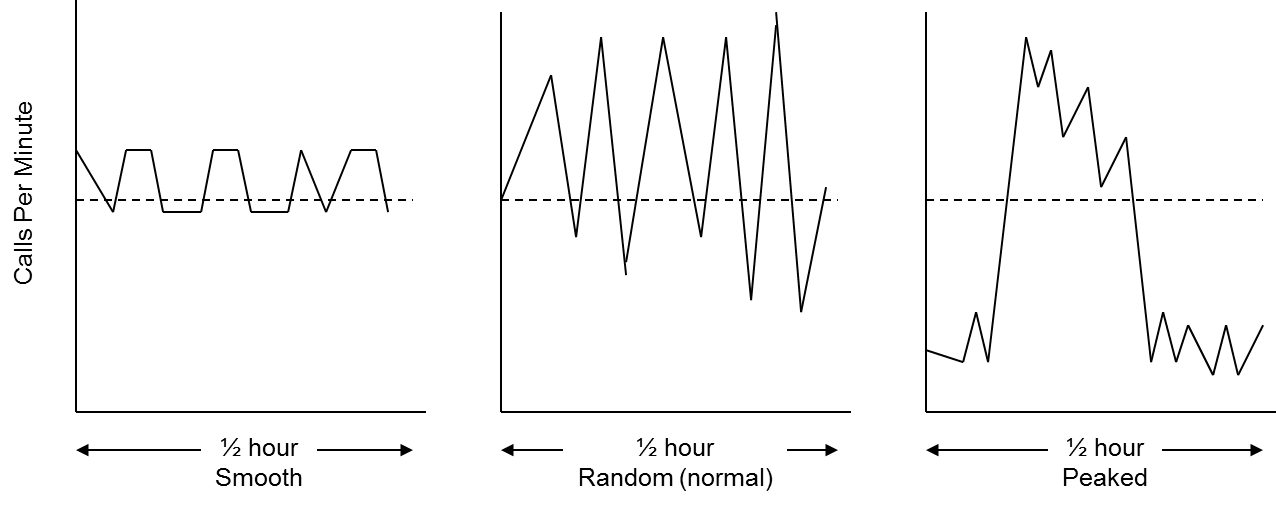If you're considering outsourcing your front/back office operations, then you need a well-defined process and methodology to help you in your decision. I’d like to share with you my approach based on my experience as both a provider and client. There are three key focus areas:
- Providing support for the sourcing decision.
- Providing support with client implementation and capability transfer.
- Ongoing management.
FOCUS AREA 1: Provide support for sourcing decision
A client’s decision to “outsource” is driven by a number of key imperatives such as costs, business maturity, infrastructure needs, etc. Contact center activities, both front and back office, can be sourced in four ways:
- Outsource the activity to an offshore location.
- Outsource the activity to an onshore location.
- Retain the activity in house, but move it to an offshore location.
- Keep the activity in house.
Companies should assess each option using a decision tree across four components:
(1) Competency assessment: This is typically performed by the company with very little external involvement. Companies must decide identify which of their contact center activities provide a level of competitive advantage. Each activity should be assessed against its exportability to a vendor and value to the company. For example:
- Basic services offer a low competitive advantage and are typically routine, easy to teach, process-driven, and objective. For example, billing, collections, order change, order inquiry, and service requests.
- Supportive services are important to the company’s value proposition and tend to lean either towards basic or differentiating. For example, website support and order taking are more basic verses complaint resolution, fraud detection, customer feedback, and up-sell/cross-sell.
Differentiating services significantly contribute to a company’s competitive advantage. For example, customer retention, concierge services, or sales configuration.
This is a critical step in the decision making process. It forces companies to identify their core business processes / activities and identify their “competitive advantages” that must remain in-house. This step is different for new startups verses more mature, companies with established processes, procedures, and systems.
(2) External complexity: Companies need to identify legal considerations such as data transfer, data security, customer data, activity related soft skills, company reputation, and language nuances.
(3) Internal complexity: Companies must assess the feasibility of moving or integrating customer, process, and product knowledge; interactions with other parts of the firm; and information and security systems. For example: the level of required system integration, geographical distance impact on process integration, product and process knowledge exportability, and security concerns and safeguards. Typically home-built systems that integrated with many processes are difficult to outsource.
It’s in the best interest of the outsource provider as this stage to work together with prospective clients and identify problematic complex processes - companies cannot outsource problems. Any potential cost savings will be offset due to increased integration, knowledge transfer, or additional oversight requirements.
(4) Country / vendor: Country’s typically fall into tier 1, 2, or 3 based on costs, business conditions, and people skills and availability. The level of importance of each category will vary company to company but I see a key part of this role as “selling” a particular location. For example, educating the client about average wages, corruption, fluctuating exchange rates, contact center market size, total workforce availability, university-educated, attrition rates, unemployment rates, work ethic, maturity of legal structure, infrastructure quality, and time zone.
A main issue faced in the vendor selection process is the seemingly endless differences between vendors. I typically use a structured selection approach with nine attributes as this stage assigning a 1-5 score and associated weight. Attributes include strategic fit and corporate capability, engagement governance model, cost benefits, technology, infrastructure, process maturity, people development, culture, and customer satisfaction.
FOCUS AREA 2: Providing Support with Client Implementation and Capability Transfer
Post vendor selection involves a number of tasks necessary prior, during, and after activities have been transferred. There are three key areas:
(1) Life-cycle based vendor relationship management: I’ve previously utilized a five-stage life-cycle model to understand and sequence the activities necessary to meet outsourcing goals. The model provides a “framework” for analyzing risks across service delivery, technology, and financial risks. The objective is to define the vendor-client relationship and how the relationship should evolve over time.
- Transition processes to vendor
- Implement system and process upgrades
- Extend functionality of systems and processes
- Link outsourced systems to processes
- Evaluate sustainability of relationship
At each stage of the model, I apply five different steps to ensure risk mitigation and governance objectives:
Step 1: Apply life-cycle model: For example, after the deal is signed the client begins the process of transferring systems and or processes to the vendor. To mitigate the potential risk of a suboptimal transfer, the project assigns multiple project managers and change management and system experts. Another example is the potential of misaligned outsourcing and service needs after completed the transfer from client to vendor. In this case, the project team may need additional relationship managers to resolve any potential alignment issues.
Step 2: Identify outsourcing risks: The project team should conduct an internal risk assessment across the organization (ie: Corporate Executives, Business Unit Executives, Functional Heads, and HR) to identify risks across three categories: (1) Service Quality, (2) Technology, and (3) Financial.
Step 3: Set governance objectives: After defining the outsourcing goals and risks, the core project team formulates objectives for each phase. For example, Transition Phase > Service Quality > [1] Coordinate and develop an employee communication strategy [2] Vendor input on early “trouble spots” to prevent widespread issue occurrence.
Step 4: Configure core governance team: The team composition is tailored directly to the key objectives and risks: Services, Technology, and Finance. Core team member roles would include for example, Vendor QoS Manager, Internal Communications Manager, Process Manager, and Finance Manager.
Step 5: Adjust vendor management team: As the project life-cycle needs change, additional project team members may be required. For example, during the high-risk implementation stage, additional staff will be required.
A life-cycle based management project approach allows companies to mitigate risks, meet stage specific project team staffing needs, and achieve key objectives and economic benefits such as capital cost avoidance, operational risk mitigation, service level agreement productivity, and cost predictability. Utilizing such a model generally leads to a successful project and contract renewal.
(2) Agent recruitment and selection: Recruiting and selecting the initial team is comprised of two components: (1) Setting expectations for the agent and manager positions and (2) Ensuring a proper fit.
You should work closely with the project team to define the initial set of desired competencies including both hard and soft skills. For example, writing skills, analytic abilities, previous experience, team fit, cultural fit, enthusiasm, active listening skills, etc. Applicants are pre-screened based on job skills required for current agent positions and aptitude for future, higher-value work.
By thoroughly explaining expectations, job responsibilities, and the direction of the center, the client should benefit from a higher acceptance and retention rate, ensure productivity goals are achieved, and client expectations are met.
Staffing the new team is always a critical project phase as it requires a balanced mix between experienced and newly hired agents.
(3) Accelerating agent experience: To ensure the long-term success of the project, it’s critical to develop the desired and sustainable capabilities within the agent pool. After establishing a base-line metrics (both objective/subjective measures) such as customer satisfaction rates, average response rate, average processing time, etc., specific problem areas can be identified. For example, agents may understand call procedures, but lack initial experienced based training. As a result, agents are able to handle a call, but do not necessarily meet customers’ expectations.
Ensure a management-led, experience-based training program is in place to ensure a successful transition across three areas:
- Hands-on senior-to-senior management training (ie: jointly listening to real calls) to highlight improvement areas and to explain goals and expectations via real examples.
- An immediate agent feedback process and coaching when necessary.
- Continuous ranking between centers/teams handling distributed calls/activities.
FOCUS AREA 3: Ongoing Management
A successful client/vendor relationship distinguishes itself through a deep understanding and ownership of communications across a continuum in addition to an appropriately structured service level agreement, incentives, and penalties.
- Instilling company vision: ensure the outsource partner’s management and front line staff not only understand the product/service and customers, but also the firm’s vision and culture as it relates to the contact center. The company vision must be reflected in all customer interactions! Some tactics to ensure agents working for the client are treated and perceived as their own include: client participation in hiring/training and product/service discounts.
- Formalizing vendor communications: regularly scheduled meetings to discuss key metrics and performance requirements. For example, meeting with the client on a weekly basis for joint “calibration” session to review metrics and performance requirements thus ensuring both parties rate customer interactions similarly. Joint long-term strategic planning will help drive efficiency, ensure productivity, assess quality scores, address staffing needs, forecast call volumes, and strengthen the vendor relationship.
- Reacting to metrics: jointly assess drivers of efficiency disruptions and work together to address these issues. This ensures meaningful dialogue to identify “root-cause” analysis and respond accordingly. For example, reviewing daily metrics to isolate key business drivers leading to productivity issues.
Capturing and relaying customer insight: collaboratively identify the drivers of customer behavior and use the information to improve service. For example, jointly develop a dispositions tool to assess the reason behind each customer contact and to understand how to improve overall service.






